BY LETTER
Wadai (WD 0230-144)
Galactography > Regions of Space > Inner Sphere
Technology > Application > Megascale Engineering
Galactography > Sephirotic Empires > Sophic League
Galactography > Systems and Worlds > Systems & Worlds W - X
Technology > Application > Megascale Engineering
Galactography > Sephirotic Empires > Sophic League
Galactography > Systems and Worlds > Systems & Worlds W - X
A relatively small ringworld around a white dwarf star | |
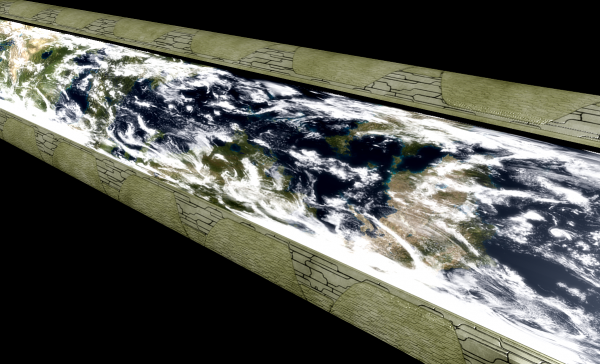 Image from Phil B | |
| The rotating surface of Wadai ringworld would tear itself apart, because the centrifugal forces are greater than the strength of any conventional materials; but a ring of massive particles push inwards to counteract this massive pressure. This has allowed the ringworld to be constructed without the use of magmatter. | |
Wadai System - Data Panel | |
| System | Location: - Distance from Dalim: 17.13 ly (J2000) - Distance from Sol: 54.37 ly (J2000) - Constellation: Cetus Reached: 1681, by colonists aboard the colony ship Amideen. |
|---|---|
| Star | Names: Wadai, EGGR 471, GJ 3162, WD 0230-144 Physical characteristics: - Mass: 0.65 x Sol - Radius: 8,200 km - Luminosity: 0.000104 x Sol (bolometric) - Temperature: 5,375 Kelvin - Spectral type: DC9 - Age: 4.28 billion years (as a white dwarf) System: The star and the two largest planets were named after the ancient Wadai empire and its two historic capitals. Other planets were named after prominent figures in the Jasmeela Islamic Community. - Wadai Ring: Rhean Mari-Tepidal Aqua-Gaian Ringworld. Radius = 1,480,000 km, Width: 17,345 km, Mass = 2 x 10e22 kg 1) Wara: Borean-Neptunian. Semi-major axis = 6.444 AU, Orbital period = 20.29 years, Eccentricity = 0.083, Mass = 17.89 x Earth, Radius = 4.074 x Earth 2) Abishi: Borean-Neptunian. Semi-major axis = 15.98 AU, Orbital period = 79.21 years, Eccentricity = 0.196, Mass = 22.08 x Earth, Radius = 4.176 x Earth |
System characteristics
The central white dwarf star, Wadai, is a remnant of a star roughly twice as massive as Sol which left the final stage of its hydrogen-fusing phase over 4 billion years ago. Since then, the white dwarf has cooled down to temperatures in the range of the cooler end of G-type stars. In the Current Era, the Wadai system is overseen by Adus D'galla, a group of S1 transapients affiliated with the Sophic League.The Wadai Ring, the oldest full circumstellar ringworld in the Sephirotics, encircles the star. The ring was constructed with carbon nanotube weave, but even the strongest of conventional materials would have been torn apart by centrifugal force were it not for the additional weight of the counter-rotating mass particle beams, stationary with respect to the rest frame, pressing inwards and balancing the outward pressure of the rotating surface.
This has allowed the construction of a ringworld with respectable surface gravity of around 0.8g using conventional materials instead of magmatter (as ultratech material which was not available when construction started on this ring). The inner surface is split into some 536 sectors, each roughly square in shape and covered with a unique artificial environment. The ring receives natural sunlight emitted from the white dwarf in the center. Its day-night cycle is replicated by a solid ring of PQDA. Early on the entire surface shared a 36 hours-long day-night cycle, but since 5102, most sections have gradually switched to their own cycle, with different (and often non-correlating) lengths of daytime and nighttime, some as short as a few tens of minutes and others multiple standard years-long.
History
During the period between 1379 and 1925, the Ran system was very active in interstellar colonization, sending tens of starships to colonize new systems over this period. In 1419, a faction within the New Home League, the Jasmeela Islamic Community, contributed to this trend by launching a starship, called the Amideen, on an interstellar flight over 40 light years long towards the white dwarf star WD 0230-144. The journey took 262 years.During the early years, the colonists established the Wadai League, an organization modeled after the Eridanus League, to govern themselves and the immigrants who would transmit themselves to the system later. It came into contact with a small group of transapients at the nearby star of Dalim, and soon became its client polity. The Wadai civilization owed its achievements to the Dalim transapients, who provided them with transapientech gifts as the Federation of Sophonts declined. These gifts were crucial in the construction of the Wadai Ring, which began in 2122.
During the Age of Expansion this cluster of semi-independent colonies became advanced in the design and construction of carbon-shelled structures. Using the material from the two cinderworlds and the sparse outer belt, they slowly assembled a 2 million kilometer ring around the star. Living in dispersed habitats dotted around the ring while it was still under construction, the Wadai colonists developed a new, vibrant culture, influenced by elements of a musically-dominated and harmonious lifestyle developed long ago on Oberon, a moon of Uranus.
After the ring was completed, contact with the Sophic League and the Stellar Umma led to a rich spiritual and noetic development among the enhanced and augmented sections of Wadai society.
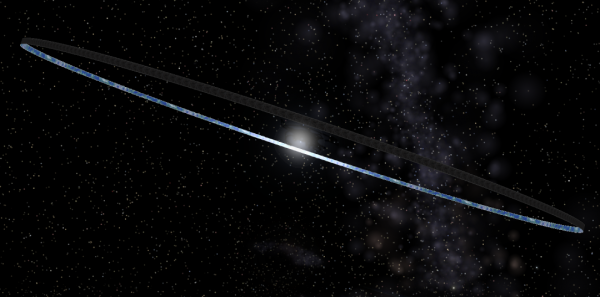 Image from Steve Bowers | |
| The Wadai Ring is two million kilometres in diameter, and surrounds a white dwarf star which is roughly the same diameter as Earth. | |
The culture of Wadai in the Current Era is a mixture of Mortalism, Islamic beliefs, MPA materialism and cosmopolitanism. The influence of musical culture is still highly important, although subject to rapid changes in style and content.
Image from Steve Bowers | |
| A crop of Euphoric Breadplant growing on Wadai Ring. Geneered crops containing data-rich subjective qualia are often grown for consumption on this world, often used to enhance the user's aesthetic or spiritual experiences. | |
Selected maps of Wadai, Sector 502
Selected Maps of the Wadai Ringworld Sector 502 |
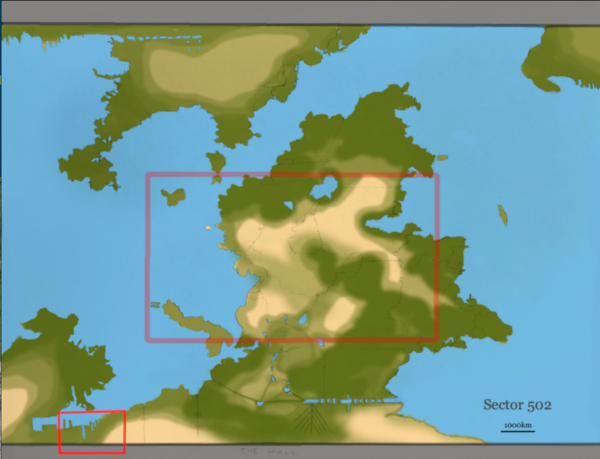 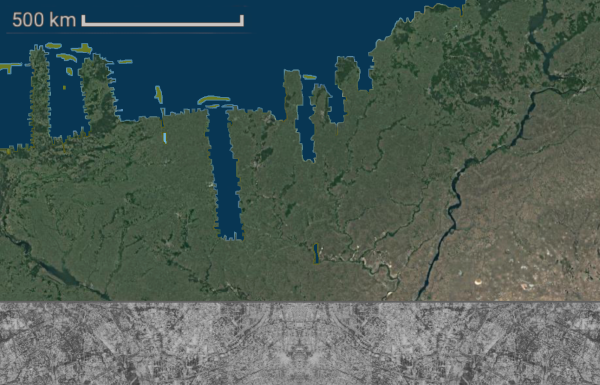  Images from Worldtree |
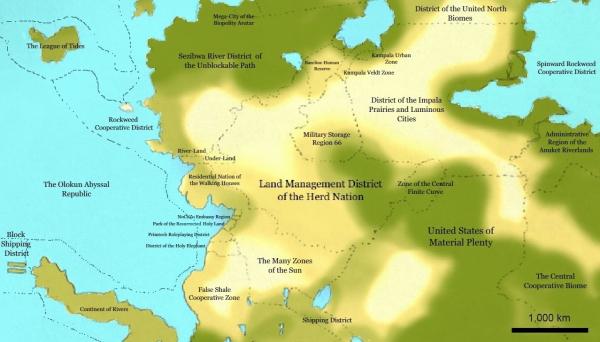 Image from Worldtree |
Related Articles
Appears in Topics
Development Notes
Text by Steve Bowers
Updated by The Astronomer 2021
Initially published on 02 December 2003.
Maps by worldtree added february 2023
Updated by The Astronomer 2021
Initially published on 02 December 2003.
Fiction about Wadai
Traveler's Notes - OuaddaiTraveller's Notes: Adventures from the Herd Nation
(Vignette #12)Maps by worldtree added february 2023






